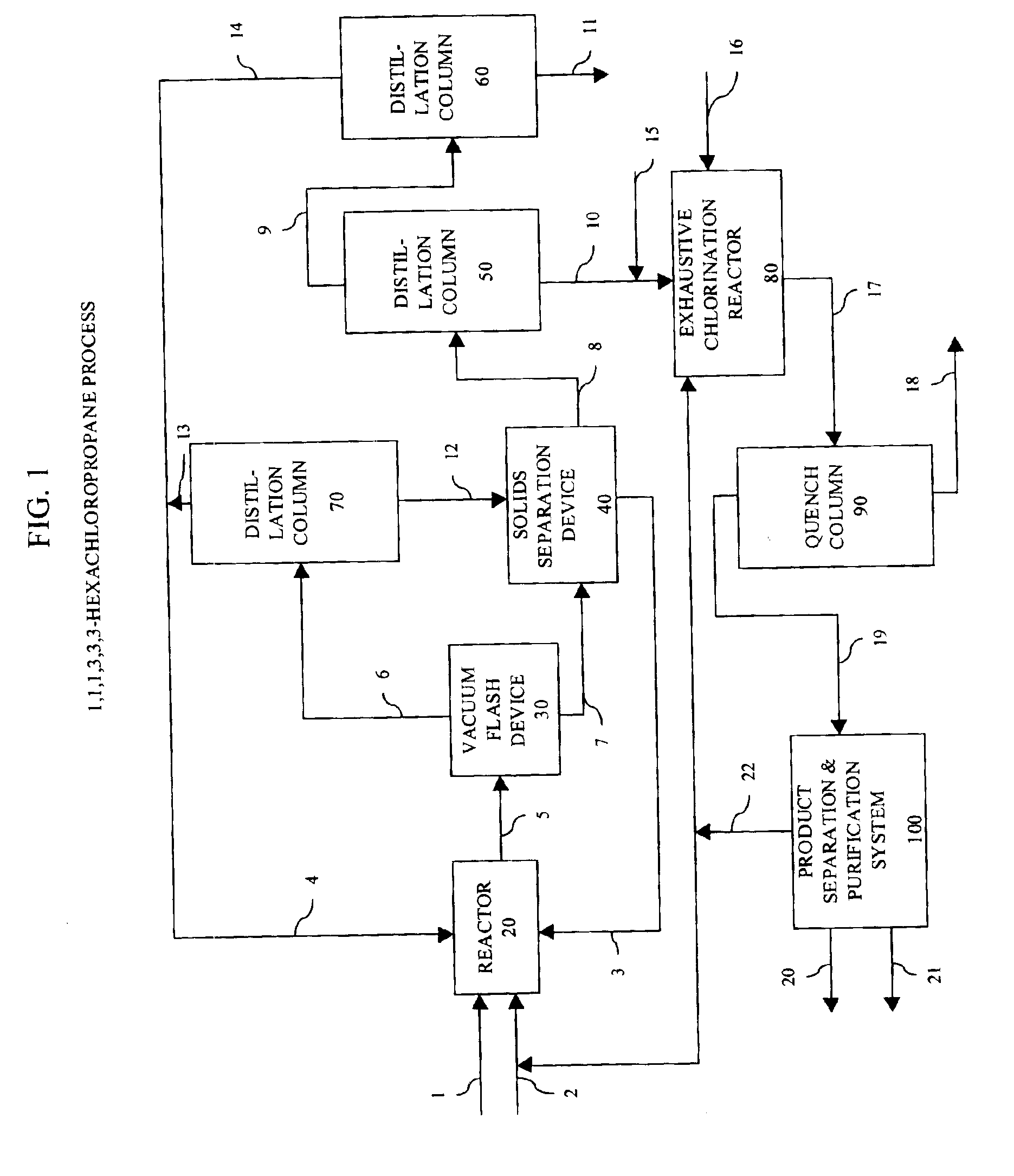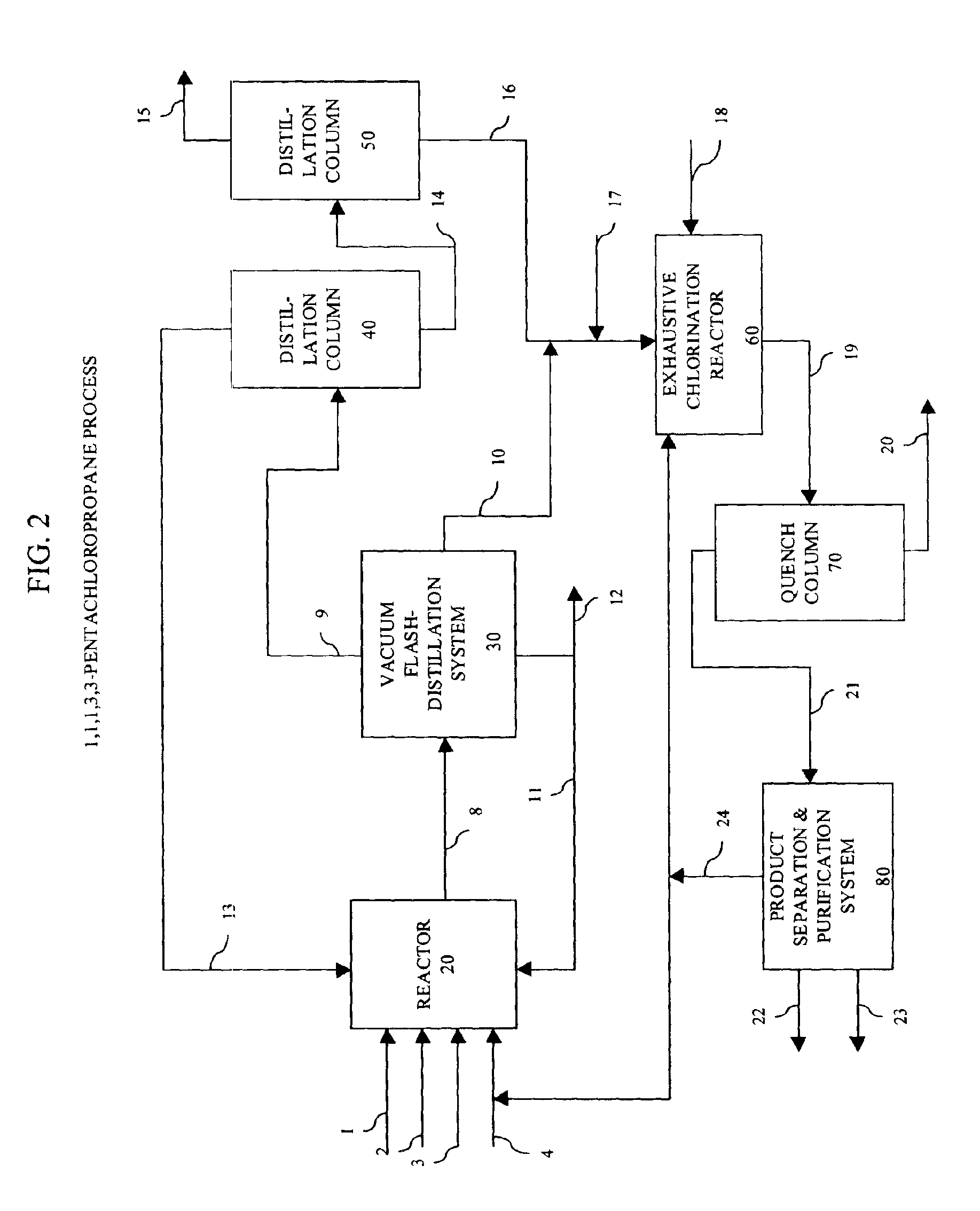Method for reusing heavy end by-products in the manufacture of polychlorinated alkanes
a polychlorinated alkane and by-product technology, applied in the field of haloalkane production, can solve the problems of inefficiency in the utilization of starting materials and unwanted by-products produced
- Summary
- Abstract
- Description
- Claims
- Application Information
AI Technical Summary
Benefits of technology
Problems solved by technology
Method used
Image
Examples
example 1
[0027]Example 1 was a baseline run conducted using only propylene dichloride (1,2-dichloropropane or PDC) as the organic feed and carbon tetrachloride as the reactive diluent. Experimental results are shown in Table I. Net production of carbon tetrachloride and tetrachloroethene were 143.88 and 100.79 grams per hour, respectively, for a total of 244.67 grams per hour of desired products. Small amounts of hexachloroethane, hexachlorobutadiene, and hexachlorobenzene were also produced as normal by-products of the reaction. Hexachloroethane can be recycled to the reactor to be converted to desired tetrachloroethene product. Hexachlorobutadiene and hexachlorobenzene are normally considered wastes and must be disposed of by incineration or other environmentally acceptable practices. A total of 1.25 grams per hour of (hexachlorobutadiene+hexachlorobenzene) were produced in this example.
example 2
[0028]In Example 2, approximately 4.9 wt % of the 1,2-dichloropropane feed was replaced with the heavy ends mixture described above. The same amount of carbon tetrachloride was used as the reactive diluent as in Example 1. Net carbon tetrachloride and tetrachloroethene production was 154.20 and 90.67 grams per hour, respectively, for a total of 244.87 grams per hour of desired products. A total of 1.38 grams per hour of (hexachlorobutadiene+hexachlorobenzene) were produced in this example.
example 3
[0029]In example 3, approximately 14.3 weight percent of the 1,2-dichloropropane feed was replaced with the heavy ends mixture described above. Approximately the same amount of carbon tetrachloride was used as the reactive diluent as in Example 1. Net carbon tetrachloride and tetrachloroethene production were 157.75 and 73.80 grams per hour, respectively, for a total of 231.55 grams per hour of desired products. A total of 1.36 grams per hour of (hexachlorobutadiene+hexachlorobenzene) were produced in this example.
PUM
| Property | Measurement | Unit |
|---|---|---|
| temperature | aaaaa | aaaaa |
| temperature | aaaaa | aaaaa |
| pressure | aaaaa | aaaaa |
Abstract
Description
Claims
Application Information
 Login to View More
Login to View More - R&D
- Intellectual Property
- Life Sciences
- Materials
- Tech Scout
- Unparalleled Data Quality
- Higher Quality Content
- 60% Fewer Hallucinations
Browse by: Latest US Patents, China's latest patents, Technical Efficacy Thesaurus, Application Domain, Technology Topic, Popular Technical Reports.
© 2025 PatSnap. All rights reserved.Legal|Privacy policy|Modern Slavery Act Transparency Statement|Sitemap|About US| Contact US: help@patsnap.com


